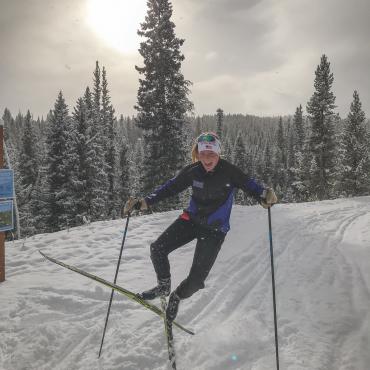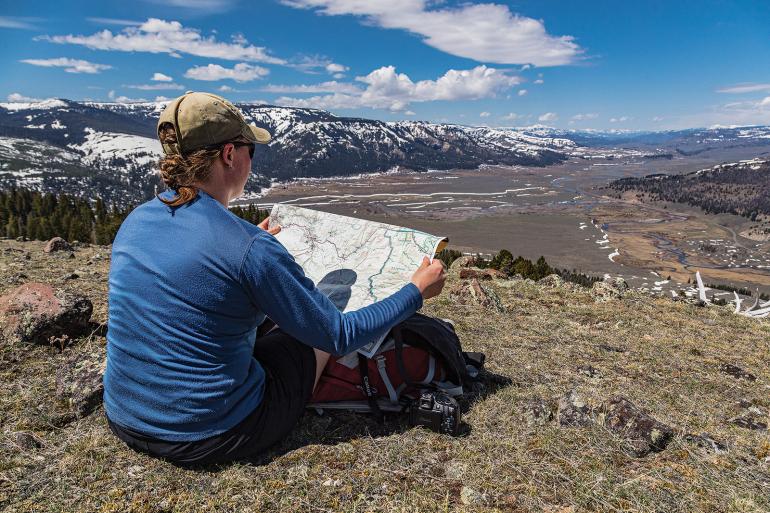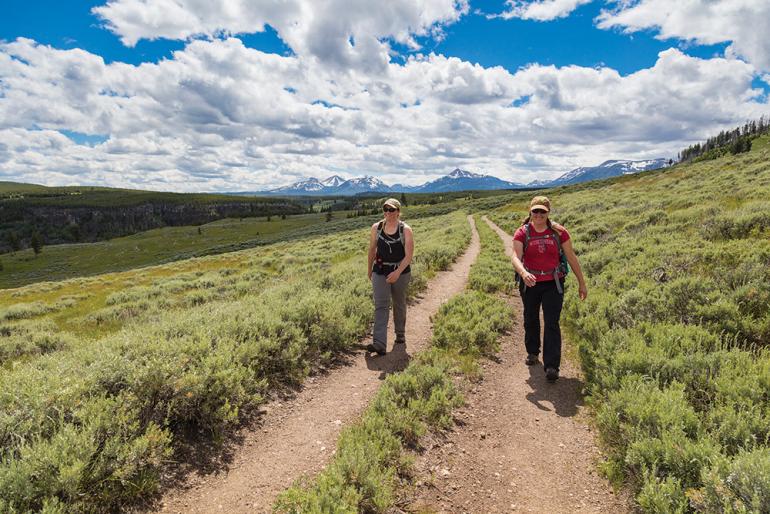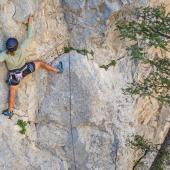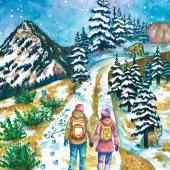Alpine Enlightenment
A flatlander adapts to mountain country.
Nowadays, you don’t have to climb a mountain to learn about mountain climbing. There are plenty of other places to earn an education: clinics, videos, articles, books... you name it. But there are some lessons you can’t discover just by reading a book—and it starts with on-the-ground experience. For me, it was voyaging into the mountains like a flatlander: ignorant, over-excited, and under-prepared. As contrary as it might seem, forgetting what I needed, getting lost, and not learning my lesson the first time around were all essential for healthy development as an outdoor enthusiast. Armed with these learnings (and a strong dose of willfulness) I took to the mountains for a season, and was chewed up and spat out the other side with an ounce more wisdom. So, for the newbies out there, to spare you the sharp teeth of Mother Nature, I have compiled a list of essentials learned from my experiential mishaps (unless of course, you’d like to do it the good old-fashioned way—in which case, disregard the following and set off blindly).
Lather Up & Layer Up, Buttercup
My introduction to mountains began in the Bridgers with a tangible lesson: bring sunscreen, and actually apply it. Or at least wear a hat with a big brim. I’d wake up with every intention and forget. I’d put them in my bag and forget. My air-headedness led to constant splitting lips and burning skin, keeping me warm well after the sun went down. Ever heard of alpenglow? Well, “the rosy light of the setting sun” is better left high on the mountains than seared to your skin. And while a good sunburn will keep you feeling toasty, don’t make that an excuse to skip packing layers, or you’ll end up like me: standing on the top of Baldy wearing shorts and a t-shirt, suffering an arctic hug from a snowstorm. In August. Welcome to Montana.
PSA: Buy a Map
After a stint exploring the Bridgers, I decided to expand my horizons to Crazy Peak in—wouldn’t you know it—the Crazy Mountains. On a Thursday in September, I read Summit Post, filled up the gas tank, and set off with a sleeping bag and about a week’s worth of peanut butter. I rose an eager beaver early Friday and began my sojourn ready for a spectacular day. I returned that afternoon after spectacular failure. I hadn’t brought a map, and after more lakes and miles passed than should’ve existed, I began to have a sneaking suspicion I was on the wrong track. I persisted anyway to the top of a gorgeous summit—belonging to a mountain I hadn’t intended to climb: Conical Peak. Being inflexible and single-minded of purpose, I paid for another night to enjoy in the back of my car (I certainly had enough peanut butter). I set out again on Saturday morning slightly stiffer, but this time, I successfully completed step one: hike the right trail. In the end, my obstinance got me another bluebird day and dramatic peak. At times, a little bit of dogged determination is just what you need to turn an adventure gone wrong into a weekend for the books. But to avoid the “gone wrong” part altogether, I suggest buying and bringing a map.
Do Your Research, Trust the Locals
Another day, I set my sights on Wilson Peak, only to discover there wasn’t a trail. This came as quite a shock to a born-and-raised Midwesterner like me. But them’s the facts. Fear not, I told myself. With a healthy dose of willpower and time for “Montana Bushwhacking,” even a flatlander can traipse her way to just about any destination. So, undeterred, I scanned Summit Post and again felt I had the gist of things. Turns out “the gist of things” doesn’t help much when you forget the previous lesson and neglect to bring a map—stumble around in the woods I did. I had read something about heading east around the “tarn.” So there I was, in middle of the woods, climbing up gullies, wandering around marshland, scratching my head, wondering what on earth a tarn was. An exotic tree? A small stream? That puddle over yonder? Frustrated, tired, lost, I finally arrived on a wooded ridge where I stood for a few moments, contemplating the consequences of continuing all the way down the other side (I was positive that I would have to climb all the way back up). Despite my doubts, I soldiered on and to my surprise, stumbled upon a beautiful alpine lake. On its banks stood a fellow hiker who kindly pointed out the easiest route up. When in doubt, never be scared to ask. The advice of a friendly Bozemanite will ease your mind and shore up your wanderings when you’ve neglected to do your research.
Let ‘Em Know Where You Go
Let’s say, hypothetically of course, that you attempted to hike the Ridge in a blizzard. And say you’d been up to Sacagawea from Corbly Gulch, missed the turn, cliffed yourself out, backtracked and righted, and then decided to take a free ride on the Foothills Trail. And say, for example, after hours upon hours and miles upon miles, that you got to Saddle Peak, headed down Middle Cottonwood, and shivering in the dark, soaked to the bone, but just couldn’t seem to find the trail to the M, where another car awaited. That is where your trusty someone comes in handy. Simply evacuate to the Middle Cottonwood trailhead, give ‘em a ring, and continue walking on the road to avoid hypothermia. Hypothetically, of course.
Folks Invented Headlamps for a Reason
Since it wasn’t fun enough the first time, I returned to the Ridge, this time in November. I started a mile before the Corbly trailhead (so as not to get my trusty steed mired in mud this time) at about 4:30 am, spending my daylight savings on something worthwhile. The moon set and the sun rose. Then the sun set, and the moon rose. Turns out hiking in the snow takes a while, especially when you’re down a limb ‘cause you’re holding a flashlight. But it can be done if you get creative (your mouth serves as a handy fifth limb). However, if you’d like to have an easier climb with four points on the snow instead of three, bring a headlamp. They’re revolutionary, I’m tellin’ ya.
So there you have it, novice, the very basics that will make your life much easier when exploring these here hills for the first time. Never take common sense for granted. Now sally forth and keep adding lessons to your arsenal—you never know, one day you just might end up a competent outdoorsman.

